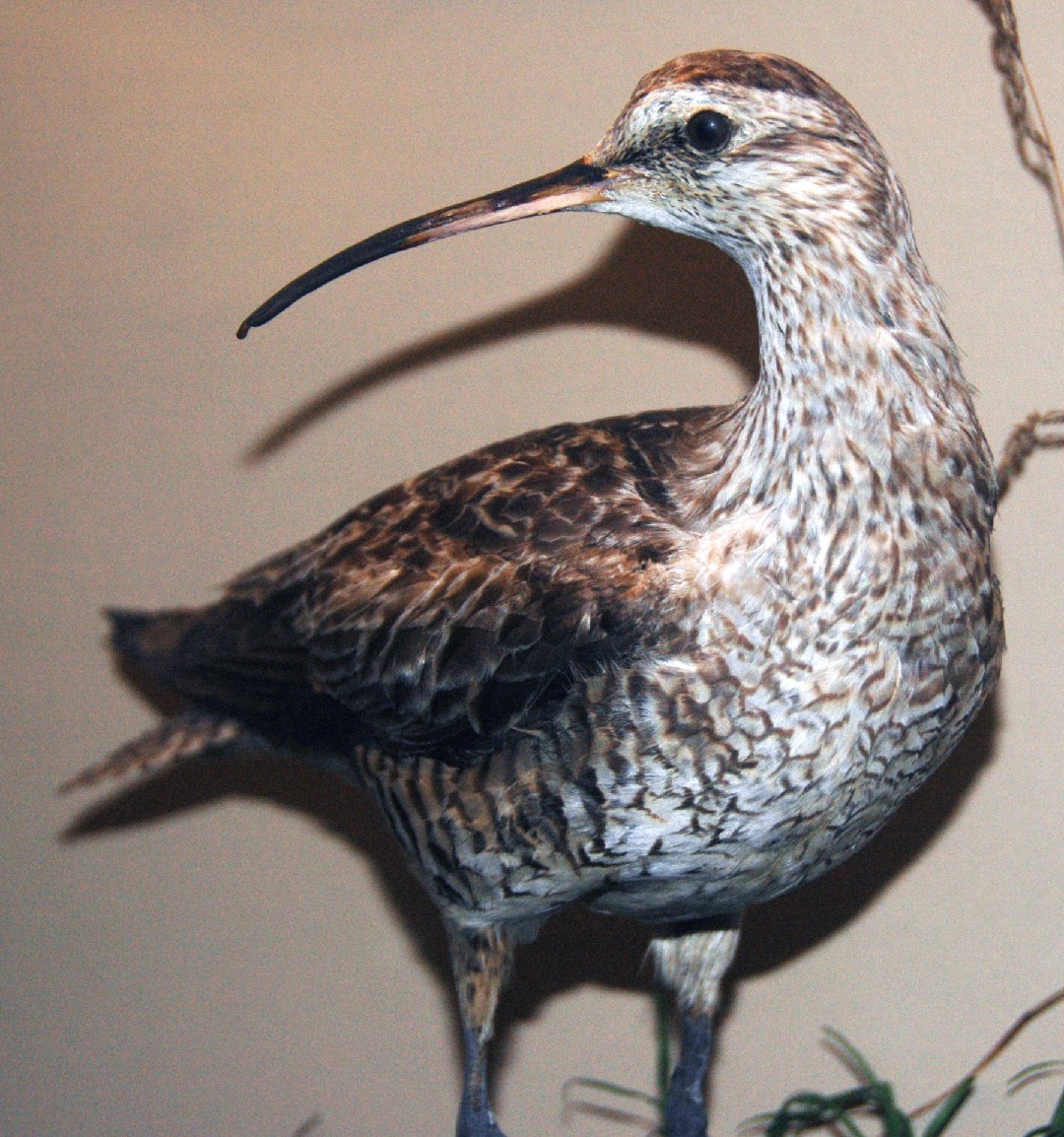Eskimo Curlew
A species of Curlews Scientific name : Numenius borealis Genus : Curlews
Eskimo Curlew, A species of Curlews
Botanical name: Numenius borealis
Genus: Curlews
Content
Description General Info
Description
Eskimo curlews are small curlews, about 30 centimeters in length, weighing approximately 360 g, and having a wingspan of 70 cm. Adults have long dark greyish legs and a long bill curved slightly downward. The upperparts are mottled brown and the underparts are light brown. They show cinnamon wing linings in flight. They are similar in appearance to the Hudsonian curlew, the American subspecies of the whimbrel, but smaller in size. In the field, the only certain way to distinguish the Eskimo curlew is confirmation of its unbarred undersides of the primaries. The call is poorly understood, but includes clear whistling sounds. The Eskimo curlew forms a species pair with the Asian little curlew, Numenius minutus, but is slightly larger, longer-winged, shorter legged, and warmer in plumage tone than its Asian relative. 
Size
23 - 41 cm
Feeding Habits
Eskimo curlews picked up food by sight, as well as feeding by probing. They ate mostly berries while on the fall migration in Canada. During the rest of their migration and on the breeding grounds, they ate insects. Snails and other invertebrates also were part of their diet during migration. 
General Info
Distribution Area
The Eskimo curlew was a New World bird. Members of this species bred on the tundra of western arctic Canada and Alaska. Eskimo curlews migrated to the pampas of Argentina in the late summer and returned in February. They used to be very rare vagrants to western Europe, but there have been no recent records. In Britain, there are four records, all from the nineteenth century. A comparison of dates and migratory patterns has led some to conjecture that Eskimo curlews and American golden plover are the shorebirds that attracted the attention of Christopher Columbus to nearby land after 65 days at sea and out of sight of land on his first voyage. In the 1800s, millions of Eskimo curlews followed migration routes from the present Yukon and Northwest Territories, flying east along the northern shore of Canada, then south over the Atlantic Ocean to South America in the winter. When returning to North America, they would fly north through the Great Plains. 
Species Status
At one time, the Eskimo curlew may have been one of the most numerous shorebirds in North America, with a population in the millions. As many as 2 million birds per year were killed near the end of the nineteenth century. The last confirmed sightings were in 1962 on Galveston Island, Texas (photographed) and on Barbados in 1963 (specimen). There was a reliable report of 23 birds in Texas in 1981, and a few dozen additional unconfirmed reports from the Northwest Territories, Texas, Ontario, Manitoba, Massachusetts, Alaska, Nova Scotia, Saskatchewan, Argentina, Guatemala, Labrador, New Jersey, and North Carolina between 1964 and 2006. No confirmed record of this species has been reported in South America since 1939. It has been suggested that the species not be treated as extinct until all possible remaining habitats have been surveyed and incidental sightings have ceased, and an assessment of critically endangered (possibly extinct) be adopted in the meantime. Full details on all sightings up to 1986 are included in the online edition of Eskimo Curlew: A Vanishing Species? This species is fully protected in Argentina, Brazil, Canada, Mexico, and the United States. Hunting has been outlawed since around 1916. 
